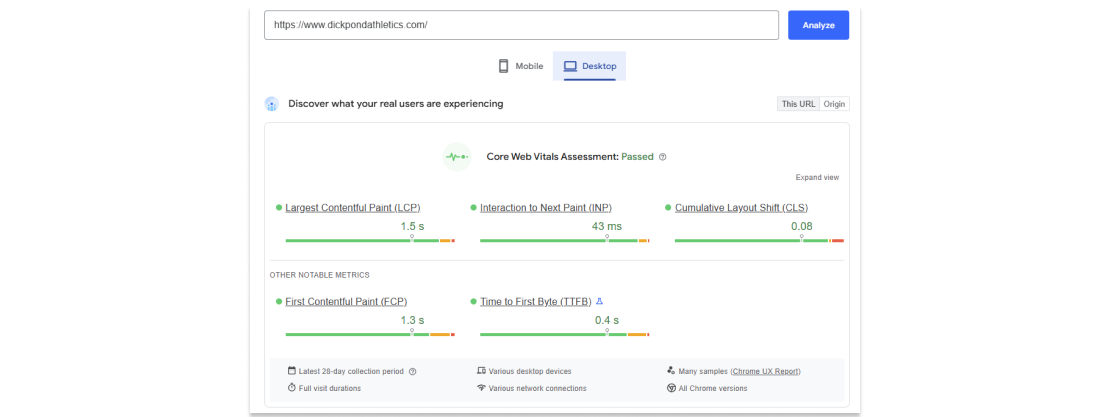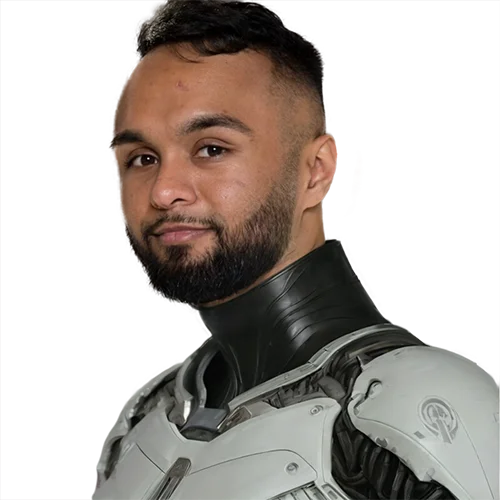
Site speed isn’t just about user experience, it directly affects how your site performs in search rankings. Since Google rolled out Core Web Vitals, it’s been clear that faster, more responsive websites are more likely to appear higher in search results. If your site is slow, even great content might not get seen.
Speed directly impacts your bottom line. A slow site frustrates users, increases bounce rates, and damages your SEO. Even if your products are great, customers won’t stick around to find out if your site takes too long to show them.
This blog breaks down why site speed matters more than ever in 2025—and what small to mid-sized eCommerce businesses can do about it. We’ll cover how speed affects conversion rates, search rankings, and user trust, plus give you clear, actionable steps to make your store faster and more competitive.
Site Speed as a Ranking Factor
Site performance is more than just how fast your homepage loads. It’s the full experience of how quickly your pages respond, how smooth the navigation feels, and how easily customers can browse and buy—especially on mobile. When people visit your online store, they expect it to load almost instantly. If it doesn’t, they leave. That means fewer sales, more abandoned carts, and less visibility in search engines.
Mobile performance matters even more. Google prioritizes how your site performs on mobile devices, so if your mobile pages lag or fail to load quickly, it can hurt your visibility and rankings.
Take our client Veils by Lily, for example. They came to MAKDigital with a slow site that was losing customers. We optimized their product image loading, reduced bloated scripts, and streamlined backend performance. The result? A faster, smoother experience across all devices — and improved SEO rankings to match. Speed isn’t just a tech detail. It’s a competitive advantage.
Mobile Speed Is Non-Negotiable

Most people browsing your website are doing it from their phones. If your site isn’t fast and easy to use on mobile, you’re losing customers before they even see what you offer. For small businesses like local bakeries or boutiques, that first mobile impression makes all the difference.
Google also knows how important mobile is. That’s why it uses mobile site performance as a key factor in how you rank in search results. Even if your content is great, a slow mobile experience can push your site lower on Google — meaning fewer people ever find you.
Fast, mobile-friendly websites give customers confidence, make it easier to browse and buy, and improve your chances of showing up when people search locally. If your site takes more than a few seconds to load or is hard to use on a small screen, improving mobile speed should be a top priority.
The Top Site Speed Killers You Might Not Notice
Site speed can be ruined by a few hidden culprits:
- Heavy, unoptimized images: High-res product photos that aren’t compressed properly can dramatically slow down load times. If your images are over 500KB each, that’s a red flag — especially on mobile.
- Too many third-party apps or plugins: Every app adds code. The more plugins you stack on, the more code your site has to load — which can cause delays. Even apps you’re not actively using could still be running scripts in the background.
- Render-blocking JavaScript and CSS: Some scripts (like tracking tools or animations) prevent your pages from showing content until they finish loading. That lag hurts first impressions and drives users away.
- Cheap or overcrowded hosting: If your server isn’t optimized or is sharing resources with too many other sites, even a lightweight store can run slow during peak traffic hours.
If your site feels sluggish but you’re not sure why, these are the first places to check. They’re common on older or DIY-built sites — and fixing just one can make a noticeable difference.
How to Measure Your Site Speed
You don’t need to be a developer to check how fast your website is running. Free tools like Google PageSpeed Insights, GTmetrix, and Pingdom let you run a quick scan and get clear performance scores.
- Load time: How long your entire page takes to fully display.
- Time to First Byte (TTFB): How quickly your server starts sending data to the browser.
- Largest Contentful Paint (LCP): Measures how fast the main content (like a large image or heading) becomes visible.
 Example of Google PageSpeed Insight Test
Example of Google PageSpeed Insight Test
If your scores come back low, your visitors are probably noticing — and leaving. For a deeper dive, MAKDigital can run a performance audit to find and fix what’s slowing your site down.
Why Speed Should Be Part of Your UX Strategy
Site speed isn’t just a technical issue — it’s one of the most critical elements of user experience. Research shows that 53% of mobile users will abandon a site if it takes more than three seconds to load.
Slow load times disrupt the customer journey. No matter how beautiful your design or compelling your offer, users won’t stick around if your site lags. A fast-loading eCommerce store builds trust, removes friction, and keeps shoppers engaged long enough to complete their purchase.
That’s why performance should be baked into your UX strategy from the beginning. Speed makes every part of the experience smoother — from landing pages to product views to checkout. It’s not just about convenience. It’s about creating a journey that feels reliable, professional, and worth the customer’s time.
If you’re unsure where to start, consider a UX audit. It’s one of the fastest ways to identify performance setbaccks, uncover usability issues, and pinpoint changes that lead to more conversions. Great UX is fast UX — and speed is the foundation that supports it all.
Conclusion: Site Speed Is a Competitive Edge
Website performance isn’t optional. In eCommerce, it’s the difference between converting a shopper and losing them. Speed impacts how people feel, how long they stay, and whether they come back.
Start by reviewing your current load times. Then take one step — optimize images, remove unused apps, or test your mobile performance. Even small changes can lead to big gains.
Need help? We provide techincal SEO services designed to improve load times, reduce bounce rates, and boost conversions. From image compression to script cleanup, our team will help you unlock the performance your store deserves.

 Eashan Mehta
Eashan Mehta





